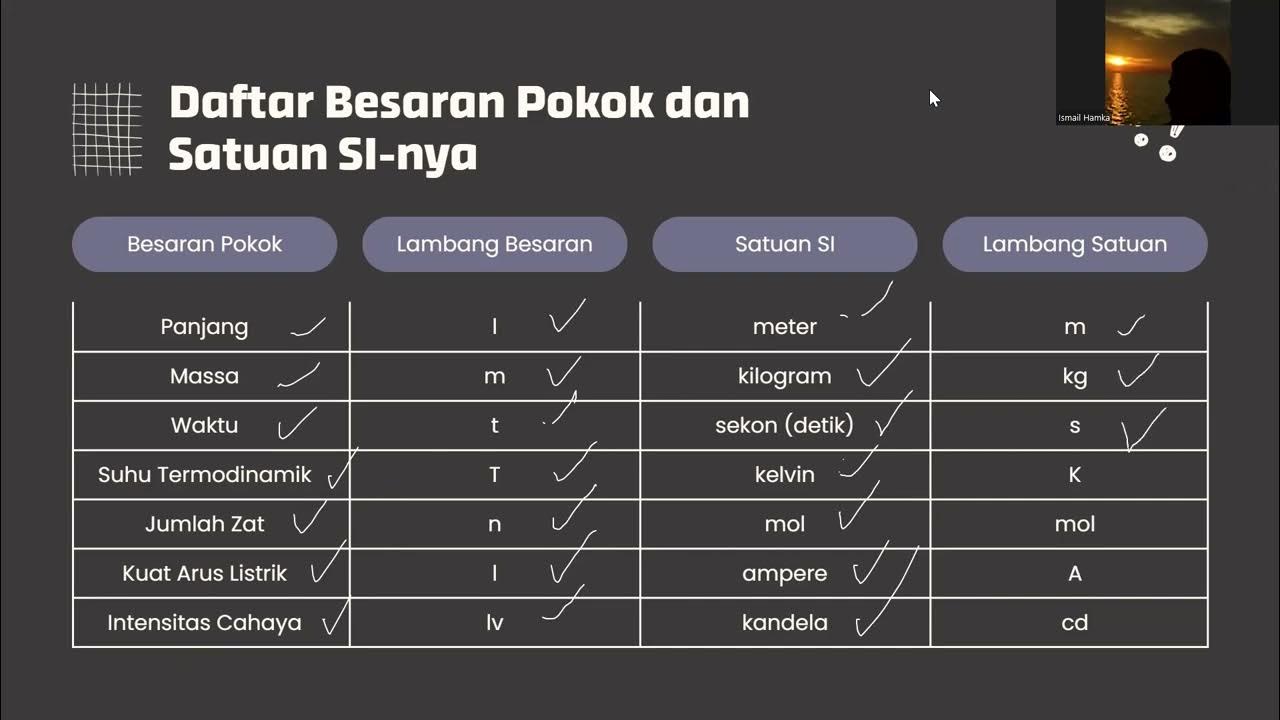Unidades de Medida - Brasil Escola
Summary
TLDRThis chemistry lesson provides an in-depth explanation of various units of measurement used in the field, including mass, volume, pressure, temperature, and length. The instructor highlights the importance of understanding unit conversions, demonstrating how to convert between units such as kilograms to grams, liters to milliliters, and atmosphere to millimeters of mercury. Practical examples and mathematical operations are used to help students grasp these conversions. The lesson also covers the formulas for temperature conversion and emphasizes the significance of knowing both the relationships between units and how to apply them in chemical exercises.
Takeaways
- 😀 Units of measurement are essential in various scientific contexts, helping quantify physical properties like mass, volume, and temperature.
- 😀 Mass and weight are often confused, but mass refers to the amount of material in an object, while weight includes the effect of gravity on that mass.
- 😀 Common units of mass include ton, kilogram, gram, and milligram. They can be converted using multiplication or division by 1000 depending on direction.
- 😀 When converting between larger and smaller units of mass (e.g., from kilogram to gram), you multiply by 1000. For smaller to larger units (e.g., milligram to gram), you divide by 1000.
- 😀 Units of volume commonly used in chemistry include liter (L), deciliter (dL), milliliter (mL), and cubic centimeter (cm³). Liter and deciliter are equivalent.
- 😀 Conversion between volume units follows the same rule as mass, where moving from larger to smaller units requires multiplication by 1000, and smaller to larger requires division by 1000.
- 😀 Pressure is the force exerted on a surface and is commonly measured in units like atm (atmosphere), mmHg (millimeter of mercury), and pascal (Pa).
- 😀 One atmosphere (ATM) is equivalent to 760 mmHg, 76 cmHg, 101,325 Pa, and 101.325 kPa. These conversions are essential in chemical calculations involving pressure.
- 😀 Temperature conversions involve Celsius, Fahrenheit, and Kelvin. For instance, to convert Celsius to Kelvin, simply add 273.
- 😀 Length units in chemistry, such as millimeters, centimeters, decimeters, meters, and kilometers, also follow specific conversion rules, with 1000 units for larger to smaller conversions and 10 units for smaller to larger conversions.
Q & A
What is the primary purpose of units of measurement in chemistry?
-Units of measurement in chemistry are used to quantify various properties like mass, volume, pressure, and temperature. They provide clarity and standardization when performing experiments and solving problems.
What is the difference between mass and weight?
-Mass refers to the amount of material in a body, while weight is the force exerted by gravity on that mass. On Earth, weight is calculated as mass multiplied by the gravitational pull.
What are the main units of mass used in chemistry?
-The main units of mass in chemistry are ton, kilogram (kg), gram (g), and milligram (mg). Each of these units represents different quantities of mass.
How do you convert between mass units like kilograms and grams?
-To convert from kilograms to grams, multiply by 1000. Conversely, to convert from grams to kilograms, divide by 1000.
What is the relationship between liter and cubic decimeter (dm³)?
-A liter (L) is equivalent to a cubic decimeter (dm³), meaning 1 L = 1 dm³.
How do you convert between volume units like milliliters and liters?
-To convert from milliliters (mL) to liters (L), divide by 1000. To convert from liters to milliliters, multiply by 1000.
What are the common units of pressure in chemistry?
-Common units of pressure include atmosphere (ATM), millimeter of mercury (mmHg), pascal (Pa), and kilopascal (kPa). These units measure the force exerted on a surface area.
How do you convert pressure units like ATM to mmHg?
-1 ATM is equivalent to 760 mmHg. To convert from ATM to mmHg, multiply by 760.
What is the formula to convert Celsius to Kelvin?
-The formula to convert Celsius (°C) to Kelvin (K) is K = °C + 273.
What is the conversion factor between kilometers and meters?
-1 kilometer (km) is equal to 1000 meters (m). To convert from kilometers to meters, multiply by 1000.
Outlines

This section is available to paid users only. Please upgrade to access this part.
Upgrade NowMindmap

This section is available to paid users only. Please upgrade to access this part.
Upgrade NowKeywords

This section is available to paid users only. Please upgrade to access this part.
Upgrade NowHighlights

This section is available to paid users only. Please upgrade to access this part.
Upgrade NowTranscripts

This section is available to paid users only. Please upgrade to access this part.
Upgrade Now5.0 / 5 (0 votes)





